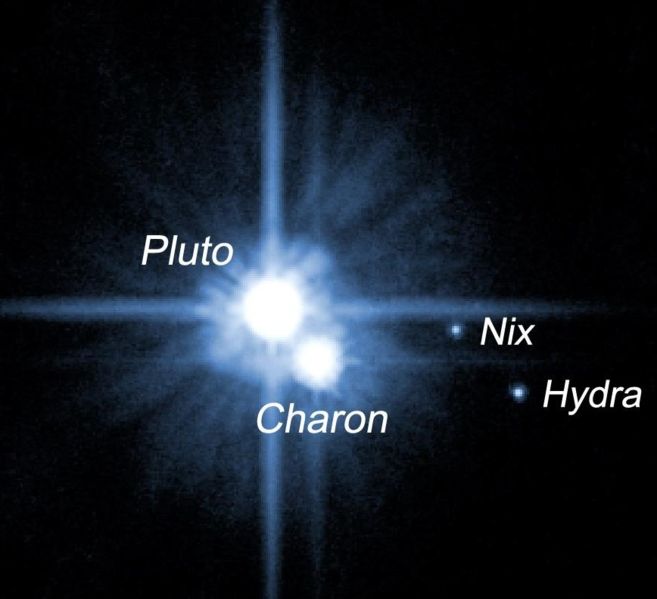

Pluto has the most elliptical orbit of all the planets and dwarf planets. In addition to this widely varying orbital distance, Pluto is also highly inclined, orbiting above and below the planet of the ecliptic that the rest of the planets follow.
You can also look through these books from Amazon.com if you want more information about Pluto.
Pluto Distance from the Sun
Since Pluto orbits the Sun, like the rest of the planets and dwarf planets, astronomers typically measure the distance of Pluto in terms of Astronomical Units (AU). 1 AU measures the distance of the Earth to the Sun.
At its closest point, Pluto is only 29 astronomical units from the Sun (4.4 billion km or 2.75 billion miles). And at its most distant, it can be 49 AU (7.29 billion km, or 4.53 billion miles) from the Sun. In addition to being highly elliptical however, Pluto’s orbit is also inclined at an angle of over 17-degrees. At some points along its orbit, Pluto is above the plane of the ecliptic that the planets follow, and at other times, it’s below.
Pluto’s average distance from the Sun is 40 astronomical units (5.91 billion km or 3.67 billion miles).
Distance From Earth to Pluto
The Earth is only 1 AU from the Sun. When the Earth and Pluto are perfectly lined up with the Sun, their closest point is approximately 28 astronomical units. And at their furthest point, when Earth is on the opposite side of the Sun, Pluto can be 50 astronomical units.
The idea of Dyson Sphere’s has been around for decades. When Freeman Dyson explored the…
Roughly 4.6 billion years ago, the Sun was born from the gas and dust of…
The James Webb Space Telescope (JWST) has been giving us a fabulous new view on…
Hypervelocity stars (HVSs) were first theorized to exist in the late 1980s. In 2005, the…
We've only gotten one close-up view of Uranus and its moons, and it happened decades…
New research suggests an impact recently rattled Mars deeper than thought. HiRISE images a recent…